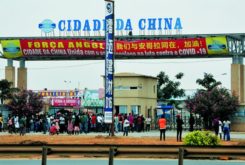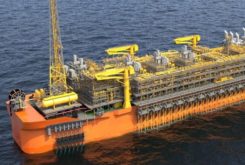The new Angolan government´s effort to boost Angola´s image as a foreign investment destination will be assisted by the new Extended Credit Facility (ECF) between the country and the International Monetary Fund (IMF), but for companies and the population some of the policies agreed will mean worrisome price hikes.
To highlight the IMF-Angola agreement, IMF managing director Christine Lagarde visited Luanda at the end of 2018, praising emphatically the new president, João Lourenço, for his government´s anti-corruption effort, as other foreign leaders had previously done, including Angela Merkel.
The ongoing campaign against corruption has boosted Lourenço´s image abroad, while also increasing his acceptance internally.
With the new ECF, Lourenço will add credibility to his government´s efforts, while bringing in technical assistance during a critical phase for the country economically and financially – which will also benefit from a total of 3.7 million USD under the programme, of which 990.7 million immediately.
Fiscal consolidation, flexibility in the exchange rate and monetary conditions leading to a reduction in inflation will be key aspects of the ECF.
The program will seek to broaden the tax base, reduce expenditure levels, eliminate arrears, while also improve fiscal transparency.
A key point will be the introduction of a VAT, for large taxpayers, as of July 1, 2019; the tax should reach small taxpayers by 2023.
Companies and consumers should be further hit by tariff rises with the elimination of subsidies for energy, transport and fuel, leading to price adjustments.
Foreseeing likely popular discontent by those more affected by the price rises, the program define aid mechanisms for the vulnerable strata of the population.
A major concern for companies already present in Angola – and a detractor of new investors – are substantial debts to foreign companies, and the IMF program contemplates the elimination of internal arrears, through pecuniary payments and in securities.
Overall, the IMF plans to reduce debt from the current level of 90% of GDP to 65% by 2023, including debt belonging to the national oil company, Sonangol, which is being restructured.
Surplus oil income (above anticipated in the state budget) is to be used for the payment of internal and external debt.
The national currency, kwanza, will be subject to market fluctuations, with a market-determined exchange rate envisaged in the program as essential to combat the scarcity of foreign exchange and to restore competitiveness.
These measures will be accompanied by an appropriate monetary policy, including the implementation of a restrictive monetary policy, aiming to anchor inflation expectations and enable the accumulation of international reserves.
In the financial system, the national bank (BNA), with the assistance of external experts, will carry out an analysis of the of the eight largest banks by September 2019.
Another central issue will be updating of the restructuring plan of the country´s biggest state lender, Banco de Poupanca e Credito (BPC), which will include recapitalisations and transfers of part of the non-performing loans to Recredit.
With a view to improving relations with the corresponding banks, the program contemplates strengthening laws on money laundering and terrorist financing, in partnership with the IMF’s legal department.
Underlying risks for the program involve, first and foremost, fluctuations in oil prices and output – indeed, since the program negotiations began, Brent prices have dropped to 55 USD/ Barrel, and the country´s production is expected to slip further.
Another issue will be resistance to reforms, among Angola´s elite, but also among the population in general.
All and all, and beyond economic and financial results, the program, and indeed the IMF´s presence, is seen in international political and business circles as a factor towards greater transparency in budget implementation and accountability.
Improving the country’s image vis-à-vis other international creditors should help the country obtain new financing from multilateral institutions – which could be crucial if oil prices fall further.
João Lourenço´s efforts to attract major foreign investors to the country´s non-oil economy are tentatively beginning to bear fruit.
2019 began with TOA Corporation and Sacyr Somague Angola signing a USD 600 million contract for the execution of the 2nd phase of Namibe Port rehabilitation works, in Southern Angola.
The implementation of these works is crucial for the upgrade of the port commercial operations, improving Namibe’s Port capacity to compete with Lobito and Walvis Bay Ports, enabling the further development of southern Angola´s economy.
The owner of the project is Instituto Marítimo e Portuário de Angola (IMPA), Ministério dos Transportes, and the executing agency is Empresa Portuária do Namíbe (EPN), the grantor is TOA Corporation and the funding has been granted by JICA (Japan International Cooperation Agency).
Africa Monitor Intelligence wrote that an investment worth around USD 600 million in up to 7 solar farms in several regions of Angola is in the process of being finalized, and is expected to be announced shortly.
The largest of these parks will be built in the Baía Farta region (Benguela) and the financing of the US-based developer is supported by the International Financial Corporation (IFC), World Bank Group.(end)



